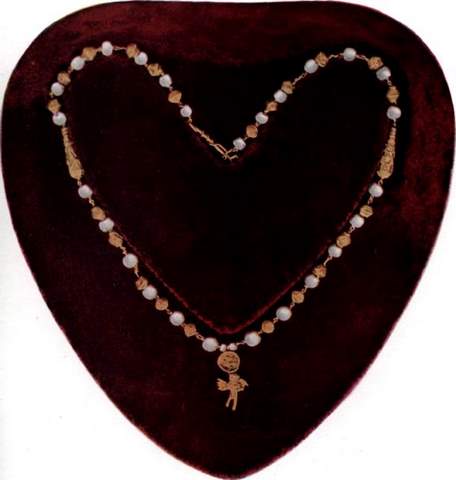|
Greek Pearl InformationLearn about historic Greek pearl information from Kunz & Stevenson. The estimation of pearls among the art-loving Greeks may be traced to the time of Homer, who appears to have alluded to them under the name............(triple drops or beads) in his description of Juno; in the Iliad, XIV, 183: Her glittering gems suspended form her ears. And in the Odyssey, XVIII, 298: With triple drops that cast a trembling light.
Classical designs of Juno usually show the three pear-shaped pearls pendent from her ears. The ancient Greeks probably obtained their pearls from the East through the medium of Phoenician traders, and a survival of the word τριγηνα seems to exist in the Welsh glain (bead), the name having been carried to Britain by the same traders, who exchanged textiles, glass beads, etc., for tin and salt.  Grecian Pearl & Gold Necklace The Persian wars in the fifth century B.C., doubtless extended the acquaintance which the Greeks had with pearls specifically appears to have been Theophrastus (372-287 B.C.), the disciple and successor of Aristotle, who referred to them under the name μαργαριτης (Margarites), probably derived from some oriental word like the Sanskrit maracata or the Persian mirwareed. He stated that pearls were produced by shell-fish resembling the pinna only smaller, and were used in making necklaces of great value. In Pliny's "Historia naturalis," that great storehouse of classical learning, reference is made to many other writers--mostly Greeks--who offered Greek pearl information; but virtually all of these writings have disappeared, except fragments from Theophrastus, Chares of Mytilene, ane Isidorus of Charace.
|






